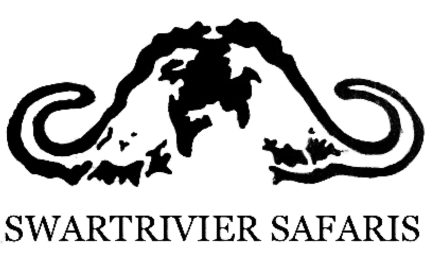Karoo Game Farming - Chapter 1
Peter and Lynn inherit a farm and decide what to do with it.
“Come on Lynn” said Peter “I think we should go for it. I know it’s a risk, but the figures look compelling enough, let’s buy them.” Peter is referring to a breeding group of 4 sable cows on offer to them from a farm in Kimberley.
“And then you want to buy a bull and three more females from Jannie?” she responded, the scepticism clearly evident in her voice. Lynn is referring to Jannie van Niekerk, who farms close by. Besides offering them animals, he has been talking to Peter about the ins and outs of introducing game.
“It’s not that I don’t trust Jannie, its just that it seems a lot of debt to be making right now at the beginning of our farming career.
Peter is 34 and his wife a year younger. They have two children, David aged 4 and little Tracy, 2. Until a year earlier they had lived in Port Elizabeth where Peter was on the sales team for Ketron Pharmaceuticals and Lynn a web developer for East Cape Online. On weekends they often visited Alwynhoek, the family farm, in the Graaff Reinet district. Exactly a year ago, Peter’s father, Ken, was diagnosed with cancer, terminal cancer as it turned out to be, and the young couple were faced with a decision: “Do we give up our jobs to take over the farm?”
At 4000 hectares the farm was a bit small, but in the end it was the fact that Lynn could continue with some of her website work from the farm that tipped the scales in favour of the move. Peter was glad to be back on the land, this piece of Africa that he had grown up on.
The land they took over was a sheep farm. Ken had loved his merino sheep and had for many years been a breeder of merino stud rams, though he used to admit that he bred rams more for the love of it than because it made much of a difference to the bottom line. The fences and infrastructure at Alwynhoek were in good nick, as was the grazing. Ken had been a good farmer, a prudent man. So Peter and Lynn had received a good farm, running well, with almost no debt, but at 4000 hectares in a 16 ha/large stock unit area, it was a bit on the small side. How were they best to use this 4000 ha? Even before they moved to the farm in the early days after Ken’s diagnosis, they had spent time researching, asking, phoning. Yes, they had the income Lynn could generate as a web developer, but they would have to maximise every bit of income they could from the farm.
Peter had been impressed with the game farming setup at Jannie van Niekerk’s. On visits there (Jannie was a bit older than Peter but they got on well) he had been impressed by the herds of buffalo, roan and sable, which species Jannie said were the money spinners. His advice was “If you want something to start with, go for sable, they are the easiest to manage.”
“Do we have to dive into a lot of debt when we have hardly started farming yet?” said Lynn, taking up their conversation.
“What’s the alternative, though, Lynn? I don’t want to eke out a living on sheep – our farm’s too small for that. There is not a land use for our semi-desert marginal land that comes close to game farming, even at these lower prices.” The prices for breeding sable had by 2016 dropped by 50% or 60% from their peak in early 2014. (For comparison of sheep and sable income click here)
“The driving factor behind the game industry is hunting, and despite the noise from the bunny huggers”, Peter continued, “I am convinced that hunting tourism in South Africa is going to be here for a while still. That means that in the worst case scenario, there is a floor price – the hunting price.”
“Yes,” responded Lynn quickly, but on sable that is quite a bit lower than the current breeding price.”
“Is it really going down to there, though, Lynn? Think about it, part of what is pushing the prices down now is the drought. If it rains I think these prices will go up again. Now is the time to get in.
“Okay, but do we have to buy seven females, can’t we start with fewer?”
“You mean, incur all the fencing and development costs yet only run a handful?”
“No,” said Lynn, “why don’t you build only half. You know you wanted to make two camps to be able to rest one, why don’t you build only one, buy half the animals, and start small?”
Peter looked long and hard at his wife of eight years. During that time he had grown to appreciate her common sense and to know that if Lynn felt uneasy about something, that it was usually best to pay attention.
“I tell you what,” she said, interrupting his thoughts, “let’s buy from Jannie. Ask him if he has one more heifer to offer you, and leave the Kimberley animals.”
“Yup, I suppose that would be the sensible thing to do. We know Jannie, so I would rather buy from him, and with them being young heifers, we will avoid the dominance issues that Jannie was telling me about. I’ll phone him this evening.”
As it turned out one of Jannie van Niekerk’s other prospective buyers had pulled out and there would be one more heifer available to Peter and Lynn. So the decision was made, Peter and Lynn would launch their game farming enterprise with the purchase of this small group of sable.
Join them in the next chapter to be part of their discussion about where on Alwynhoek they should build a sable camp.


